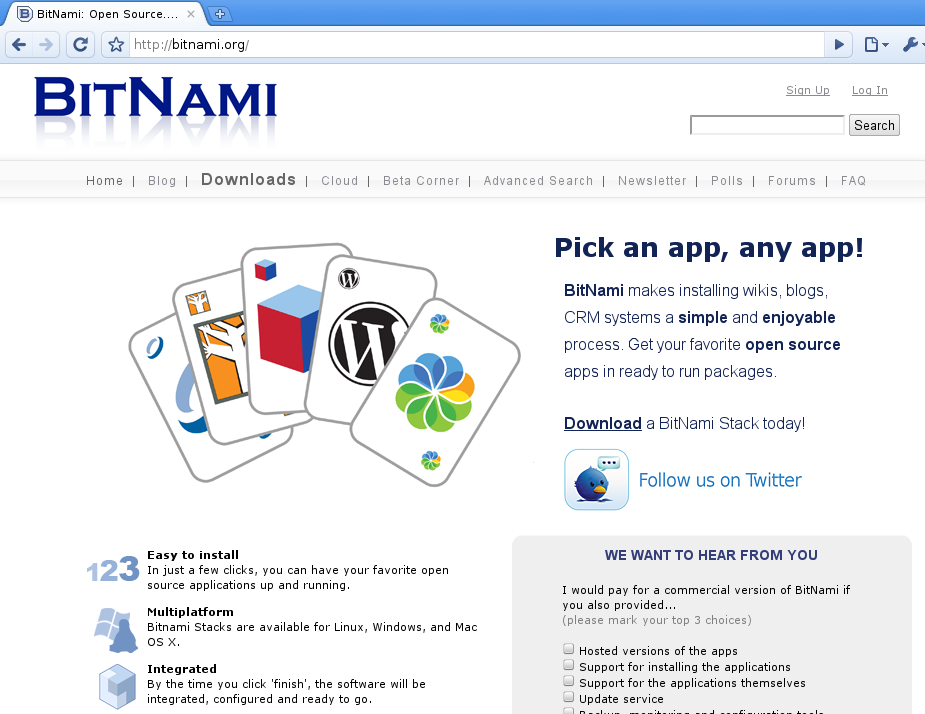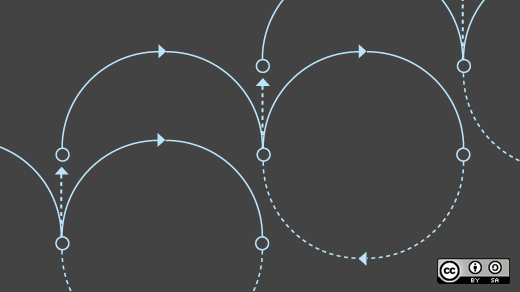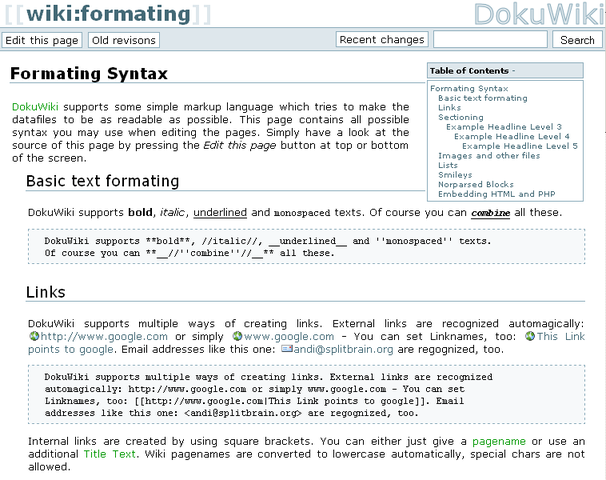Bitnami provides users with a couple of modules, for the SiteCake and DokuWiki web-based applications, that can be deployed on top of an existing LAPP Stack. They are available for download from the project’s homepage or via Softpedia, free of charge.
- BitNami DokuWiki Stack I recently installed the BitNami DokuWiki Stack on a Windows XP Pro box, which means that, even though it's running on Windows, it's using Apache as the webserver. It also uses PHP 5.2 and the 2008-05-05 release of DokuWiki, and everything (so far) works perfectly, except spellchecking.
- Tags: bitnami boot dokuwiki linux slackware stack start Written by Cristiano Bitnami stacks are a sort of self-contained sets of applications that allow you to run server-side software without touching anything on your operating system.
- Bitnami DokuWiki Stack 20180422b-17. An installer that greatly simplifies the installation of Dokuwiki and its runtime dependencies.
- DokuWiki Certified by Bitnami (PV) By: Bitnami Latest Version: 20170219e-5-r11 on Ubuntu 16.04 Legacy paravirtualization (PV) instance types are no longer supported.
What if I said install an application stack like LAMP in 5 minutes??
Yes, Bitnami is an absolute revolution in user experience in using free Opensource application on most if not all of your Operating Systems including Solaris,Windows, Mac OS and ofcourse needless to say Linux.

BitNami stacks make it incredibly easy to install your favorite open source software all in just a few clicks. Forget about all those preconfigurations, installing the pre-requisuites, dependencies. Bitnami gives real user experience in installing the applications all in one go. You would feel like installing a software in Windows Operating system by a wizard driven installation process. Application stacks include an open source application and all the dependencies necessary to run it, such as Apache, MySQL and PHP or Ruby. All you need to do is download the Stack, provide a few pieces of information when prompted by the installation wizard, and that’s it. By the time you click ‘finish’, your new application will be ready to run. All stacks have been packaged using BitRock’s multiplatform installer.
The stacks of application range from Infrastructure to Blogs and eLearning. The community is very active and you can request for a stack as well!!!!
The stacks for Linux include
Infrastructure
DjangoStack – High-level Python Web framework
JRubyStack – 100% Java implementation of Ruby
LAMP – Apache/MySQL/PHP stack for Linux (You know it!!!)
RubyStack – Ruby on Rails MVC framework DB backed web applications
Blog

Roller Stack – Roller Blog server
Bitnami Dokuwiki Stackable
WordPress Stack – WordPress (2.5.1) blogging server
Bug Tracking
Mantis Stack – Mantis, web based Bug tracker
Redmine Stack – Redmine Project Management Application (Ruby on Rails based)
Trac Stack – trac Wiki & bug tracking system
CMS & ECM
Drupal Stack – Drupal content management platform
eZPublish Stack – eZPublish CMS for web plublishing, intranets, ecommerce etc
Joomla Stack – Joomla, a very popular OpenSource CMS
KnowledgeTree Stack – KnowledgeTree Document management system
Forums
phpBB Stack – phpBB, leading opensource forum and bulletin board
Planning
Tracks Stack – Tracks, Ruby on Rails based application
Poll Management
opina Stack – Opina, Web based Poll management tool
Portal Server
Liferay stack – Liferay portal framework
Version Control
Subversion Stack – Subversion version control software
Wiki
DokuWiki Stack – DokuWiki wiki
MediaWiki Stack – MediaWiki, original wiki written for Wikipedia
eLearning
Bitnami Dokuwiki Stacks
Moodle Stack – Moodle Course Management System
Let’s have a look at the installation of LAMP server on openSUSE:
Download LAMP Stack from here
Change permissions
Switch user to root and change permissions on the downloaded installer

Saihari@Linux:~> su –
Password:
Linux:~# chmod 755 bitnami-lampstack-0.9.4-linux-installer.bin
Run the installer
Bitnami Dokuwiki Stacked
Linux:~# ./bitnami-lampstack-0.9.4-linux-installer.bin
This starts the wizard on your openSUSE.
1. Click Forward on the welcome screen
2. Select the folder to install the application stack and clickForward
3. Enter the Root user password and clickForward
4. Enter the phpmyadmin, webadmin for MySQL software “administrator” password and click Forward
5. Now, we are ready to install, select Forward to start the installation
6. Click Finish to launch the application stack
This should launch the default page for Apache with details to launch phpmyadmin and thats it done!!!!
I’ve never installed a LAMP server in less than 5 minutes. Great peice of work!!! For more information and downloads, click here to visit bitnami homepage.
There is an uninstaller script install in the directory selected to install the software which can uninstall the stack completely.
Bitnami stacks are a sort of self-contained sets of applications that allow you to run server-side software without touching anything on your operating system.
After the installation procedure all the needed stuff is located into a folder which can be also relocated, if necessary.
In my opinion these kind of tools are very useful when you have to try something on the fly, but also when you have to deal with an important project.
Normally, in both cases an initial configuration is required (for example you need a LAMP bundle). But the stacks let you to literally skip this configuration phase, so you can dedicate yourself to the main activity without any time loss.
Last week I was trying to setup an internal wiki at home and my choice fell to the DokuWiki stack provided by Bitnami.
I already used DokuWiki in the past. It’s very handy because it stores all the information on text files and so it doesn’t require a database. You only need PHP in practice.
After the end of the installation of the stack I needed a way to run automatically the application on startup.
Here you can find some instructions on how to do that. Unfortunately these instructions work well only for Debian-like and RedHat-like distributions. However, there are some hints that you can also use on Slackware!
Bitnami Dokuwiki Stacker
Starting DokuWiki automatically at boot


At first hand, one could be tempted to simply add a line, like this one below, in /etc/rc.d/rc.local:
What happens if the network is not ready at the time the command here above is launched?
This kind of approach doesn’t work, because we are trying to automatically start an application that needs the network to be up!
The concept is well explained here:
This allowed me to solve the problem. I created a simple script called rc.wiki in /etc/rc.d/ giving execution permissions to it (with chmod +x rc.wiki):
Then I added the following lines at the end of /etc/rc.d/rc.inet2:
Now, every time I turn on the PC, after a few seconds I can reach DokuWiki by pointing the browser to the address http://<local_IP_address>:<port>/dokuwiki/.
Note: the default port number used by the Bitnami stack is 8080.
